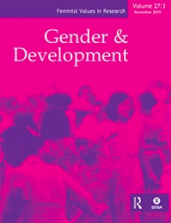Whose turn to do the dishes? Transforming gender attitudes and behaviours among very young adolescents in Nepal

Overview
Men who use caring words instead of violence, and who are equal partners in nurturing their children and caring for their homes, are not formed overnight. Attitudes and behaviours that lead to gender equality are developed through a socialisation process beginning at birth. Early adolescence presents a window of opportunity to intervene before individuals solidify their ideas about gender roles and norms. The knowledge, attitudes, and skills acquired between the ages of 10 and 14 are particularly influential. Unfortunately, development research and programme initiatives addressing gender inequity have focused little on these issues. Save the Children’s Choices curriculum consists of eight developmentally appropriate activities, supporting very young adolescents /that is, children aged 10 /14 /to explore alternative views of masculinities and femininities. The hope is that this will lead to better sexual and reproductive health outcomes for participants and their communities in the future. This article focuses on Choices and its impact in Siraha district, Nepal. Research revealed changes in children’s gendered attitudes and behaviour relating to discrimination, social image, control and dominance, violence, attitudes to girls’ education, and acceptance of traditional gender norms, before and after participating in Choices.
This article is hosted by our co-publisher Taylor & Francis. For the full table of contents for this and previous issues of this journal, please visit the Gender and Development website.
Keywords
Additional details
How to cite this resource
Citation styles vary so we recommend you check what is appropriate for your context. You may choose to cite Oxfam resources as follows:
Author(s)/Editor(s). (Year of publication). Title and sub-title. Place of publication: name of publisher. DOI (where available). URL
Our FAQs page has some examples of this approach.


